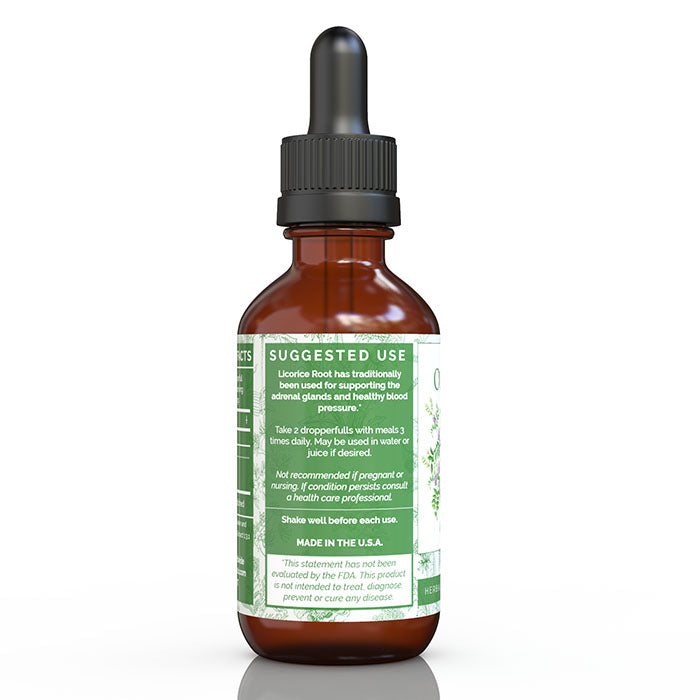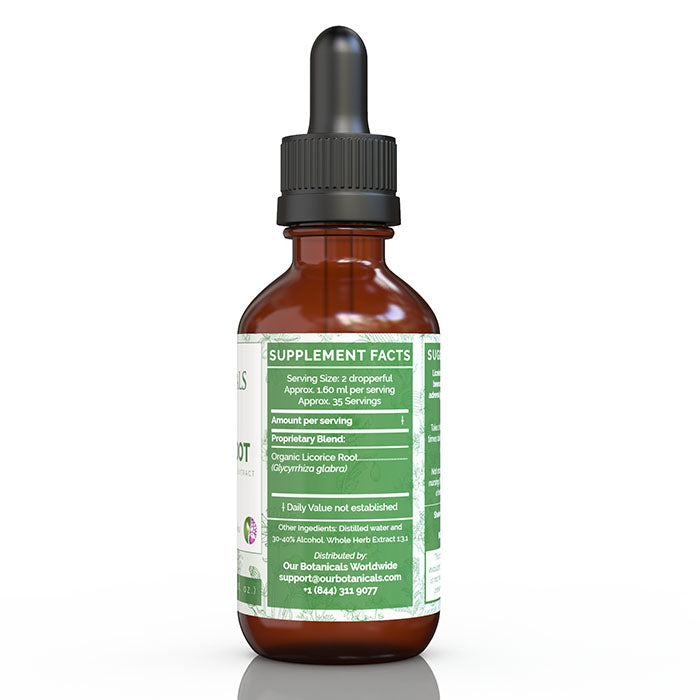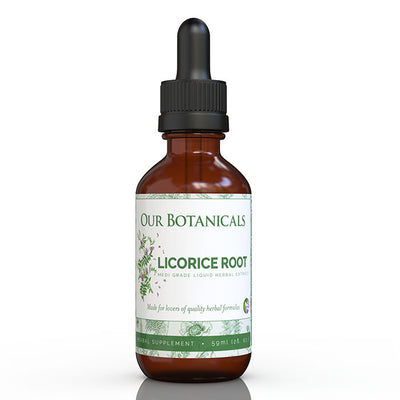Licorice root extract 2 oz
Licorice root is one of the most widely used medicinal herbs worldwide and is the single most used herb in Chinese medicine today.
It was used by the Egyptians as a flavoring for a drink called Mai-sus, and large quantities were found in the tomb of King Tut for his trip into the afterlife. Pliny the Elder recommended it to clear the voice and alleviate thirst and hunger. Dioscides, when traveling with Alexander the Great, recommended that his troops carry and use licorice to help with stamina for long marches, as well as for thirst in areas of drought. In the Middle Ages it was taken to alleviate the negative effects of highly spicy or overcooked food. It was also used for flavoring tobacco, and as a foaming agent in fire extinguishers and beer. In a recent survey of Western medical herbalists, licorice ranked as the 10th most important herb used in clinical practice. An astonishing number of Chinese herbal formulas (over 5,000) use licorice to sweeten teas and to “harmonize” contrasting herbs. Its first documented use dates back to the time of the great Chinese herbal master Zhang Zhong Zhing, about 190 AD, but it was certainly used for many centuries prior to this. In 1914 the Chicago Licorice Company began to sell Black Vines, the first in a very long line of licorice based modern candies.
Constituents
Glycyrrhizin, complex immune-stimulant sugars.
Typical Preparations
Teas, tinctures, and in encapsulations. The whole sticks and slices may be chewed straight and are pleasant tasting.
Summary
The distinctive flavor and sweetness of licorice comes from the glycyrrhizin that composes up to 25% of the root’s makeup. The root itself is hard and fibrous, and is thus typically used for food only as a liquid flavor infusion. In fact, many licorice flavored candies include no real licorice, and are instead flavored with similarly flavored spices such as anise and fennel.
Medicinally, Chinese licorice is a renowned component of traditional Chinese medicine, and is recognized as one of its fifty fundamental herbs. It shares many of the constituents common with Glycyrrhiza glabra, but uniquely, it also contains the flavonoid quercitin, which has been studied for a variety of medical uses.
Chinese licorice is not as well studied as its European counterpart, but both are indicated for many of the same functions. Licorice root may be used to assist with upper respiratory catarrhs and is recognized by traditional Chinese practitioners as an adaptogen, helping the body to cope with daily stress. It may also be used to relieve minor abdominal discomfort, and is used in the herbal preparation STW-5 to alleviate dyspepsia.
Precautions
Specific: Not for use in pregnancy except under the supervision of a qualified healthcare practitioner. Not for use in persons with hypertension, liver disorders, edema, severe kidney insufficiency, low blood potassium, or heart disease.
General: We recommend that you consult with a qualified healthcare practitioner before using herbal products, particularly if you are pregnant, nursing, or on any medications.
Ingredients
- Licorice Root (Glycyrrhiza glabra)
All Herbs in our Formulas are Organic, Wildcrafted, or Consciously Cultivated 35% Alcohol and Distilled Water
Tinctures
Do not need to be refrigerated but should be stored in a cool, dark location (out of direct light). This will ensure the longest freshness and potency. Date reflected on the bottom of the bottle is the standard "expiration" date. If stored properly these products will last far beyond the recommended expiration date.
Our formulas are Made in the USA with globally sourced ingredients. All ingredients are Organic, Wildcrafted or Consciously Cultivated. Tinctures are made with sugarcane alcohol, capsule formulas contain 100% powdered herbs with no binders or fillers. All formulas are gluten free.








